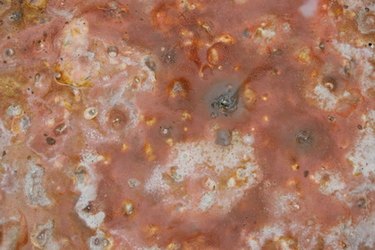
Septic systems treat household waste and are necessary when you construct a new home in an area not serviced by public sewers. When you need a septic tank for a new home or when you need to replace an old septic tank, it is wise to hire a septic contractor who is trained to inspect and install septic tanks, drain septic fields and pump out solids from old tanks.
Step 1
Determine your size requirements. Before looking at septic systems, figure out what size of septic tank is right for your home. Select the best size for your home by estimating your daily water usage. For example, water usage of 0-500 gallons per day requires a 900-gallon capacity septic tank to process waste water effectively while 501-700 gallons requires a 1,200-gallon capacity tank. In most U.S. jurisdictions surveyed by Inspectapedia.com, the minimum-size tank permitted were ones with a capacity of 1,000 gallons.
Video of the Day
Step 2
Decide what type of septic tank design is best. Don't think in terms of brand name, but what type of soil your septic tank will be installed into. If the area where you are building a septic system sits in coarse sand soils or gravels, you will need a pressure-type septic system design as opposed to a gravity septic system design. Gravity septic systems can allow streams of untreated sewage to sink underground, whereas pressure system designs are better equipped to handle underground sinkage, particularly in loose or gravely soils. Studies such as one conducted in 1994 for the Florida Department of Health have led people to believe that pressure-designed systems are the best type of septic tank for any building situation.
Step 3
Select the pump type you will use. All septic systems use one of two pump types, either a centrifugal or turbine pump. The best septic systems use turbine pumps, which are more reliable. However, they are also more expensive than centrifugal pumps. Both are available in a range of sizes but turbine pumps are designed to cycle hundreds of thousands of times and will generally last longer than a centrifugal pump.
Step 4
Contact a septic tank installer or contractor in your area and ask for a consultation on what size and type of septic system that contractor recommends. Ask neighbors and friends for recommendations of good septic contractors to find one that can be trusted. As you will need someone to install your system, you may be able to utilize a contractor's help in selecting the best one for your home or building project.
Video of the Day